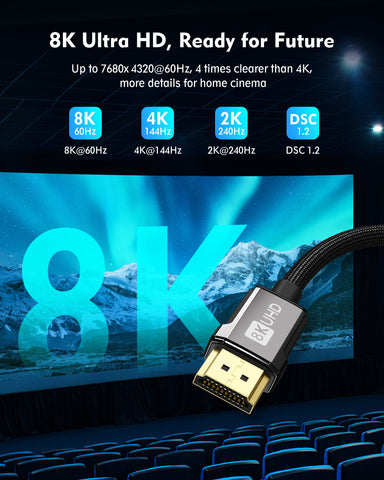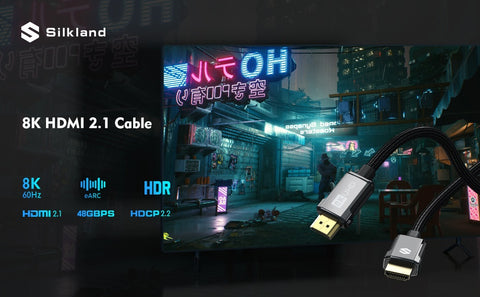What is difference between HDMI 2.0 and HDMI2.1?
The HDMI 2.1 standard was born in 2017 and it is a technical standard for future ultra-high-quality audio and video transmission. The biggest difference between HDMI2.1 and HDMI2.0 is bandwidth. The transmission bandwidth of HDMI2.0 is 18Gbps, while the bandwidth of HDMI2.1 has been upgraded to 48Gbps. The increase in bandwidth directly brings an increase in the amount of transmitted data.

Secondly, HDMI2.0 cannot support the transmission of 8K video, and HDMI2.1 can not only support 4K @120Hz, but also 8K@ 60Hz.
In addition, HDMI2.1 also supports VRR (variable refresh rate). Used in games to reduce or eliminate picture delay, stuttering, and tearing to ensure smoother games and more complete details.
At the same time, HDMI2.1 also supports ALLM (Automatic Low Latency Mode). In the automatic low-latency mode, smart TV users do not need to manually switch the low-latency mode according to the content played on the TV, but will automatically enable or disable the low-latency mode according to the content played on the TV. HDMI2.1 can achieve smooth, non-stop, non-interrupted viewing and interaction.
HDMI2.1 also supports dynamic HDR, while HDMI2.0 only supports static HDR.
To sum up in one sentence, with the support of HDMI2.1 technology, the picture presented by the TV is clearer and lifelike, with richer colors, better audio-visual effects, and reduced picture delays and freezes.

So, for users, is it necessary to upgrade to HDMI2.1 interface? The answer is not necessarily.
If you are a gamer, in order to have a better experience, it is still necessary to get a 4K @120Hz TV that supports HDMI2.1. If you usually chase dramas and watch videos, you can wait and see for a while, and it’s not too late to start when HDMI 2.1 is fully popularized.
Share:
What is HDMI?
DisplayPort Cable